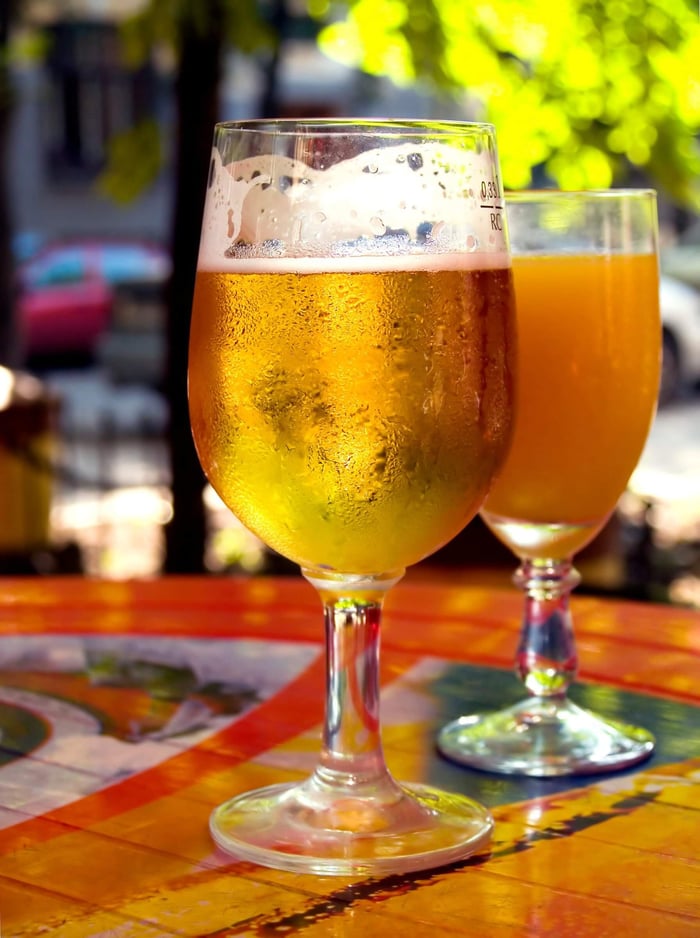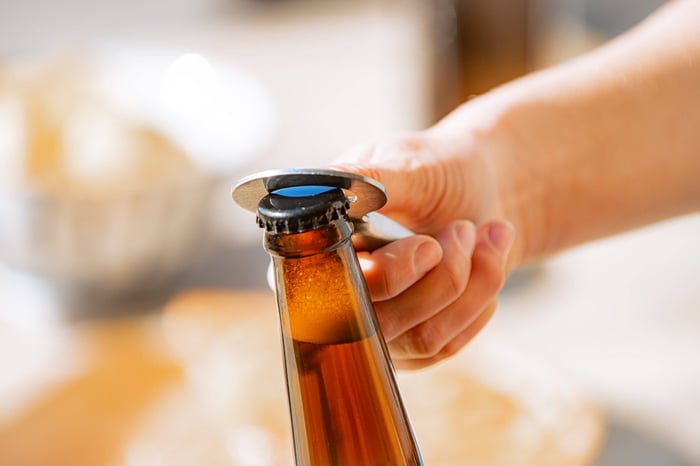Right, let's talk about Cold IPA – and before you start groaning about another IPA variant cluttering up the beer world, give us a moment to explain why this one's actually worth your attention, especially during those rare British heatwaves.
What's All This Cold IPA Business About Then?
First things first: whoever named this style clearly wasn't thinking straight. "Cold IPA" tells you absolutely nothing useful about the beer itself – it's not brewed cold, served any colder than usual, or particularly different from other IPAs in temperature terms.
What we're actually dealing with is a cleverly crafted style that uses predominantly pilsner malt with significant amounts of adjuncts – we're talking up to 40% maize or rice. Ring any bells? Yes, it's remarkably similar to IPL (India Pale Lager), and you're spot on to notice the resemblance.
The crucial difference is that Cold IPA has managed to sort out the issues that often plague IPLs. Many IPLs suffer from an identity crisis – they're caught between being aggressively hopped lagers or IPAs fermented with lager yeast, resulting in a style that never quite feels cohesive.
Getting Your Hops Sorted
The British Approach to Hop Balance
Cold IPA sits cleverly between West Coast IPA boldness and NEIPA softness. You want sufficient bitterness to support that clean, crisp malt backbone – think 40-70 IBU total – but not so much that it overwhelms the refreshing character that makes this style special.
Here's our methodology: aim for 25-55 IBU from your boil and whirlpool additions, then allow dry hopping to contribute the remaining 15 IBU through hop polyphenols and biotransformation processes. This approach maximises hop character whilst maintaining drinkability.
British Brewing Insight: UK hop varieties like Jester and Godiva work brilliantly in the whirlpool, providing tropical notes that complement New World dry hop additions perfectly.
The Yeast Situation: Not What You'd Expect
Here's where things get interesting, and possibly controversial: most Cold IPAs use Fermentis 34/70 lager yeast. Before you start questioning our sanity, let us explain the method behind this apparent madness.
We're not talking about traditional lager fermentation temperatures here. These hybrid strains ferment quite happily at around 19°C (66°F), similar to the approaches used for California Common or Kölsch styles. This warmer fermentation encourages biotransformation during dry hopping, promoting those sought-after tropical and citrus fruit characteristics.
Alternative Strategy: If working with lager yeast feels too risky (and we completely understand the hesitation), California Common or Kölsch yeasts provide more predictable results whilst maintaining the clean, crisp profile you're after.
Your Brew Day Game Plan
Question: What's the Ideal Grain Bill Structure?
Start with quality pilsner malt as your foundation – this provides the clean base you need. Add flaked rice (our preference over maize for mouthfeel) at approximately 25-35% of your total grain bill. Balance this light foundation with adjusted water chemistry and consider mashing a degree or two higher to add body.
Question: How Do We Handle Temperature Control?
Whether you're using 34/70 or opting for the California Common approach, temperature stability becomes more critical than with typical ales. Maintain consistent conditions and resist the urge to rush – this style rewards patience and attention to detail.
Question: What's the Optimal Hop Schedule?
- Boil additions: Minimal, just sufficient for structure
- Whirlpool at 80°C: Your primary bittering and aroma source
- Dry hop: Where the magic happens – generous quantities post-fermentation
Why We're Calling Them Crisp Hop Hybrids
Let's be honest – "Cold IPA" is utterly useless as a style descriptor. That's why around our brewery, we've started referring to these as Crisp Hop Hybrids. At least that tells you something about what you're drinking!
These beers work brilliantly as gateway brews, taking punters from NEIPA appreciation towards more traditional IPA styles. They're approachable without being bland, crisp without being thin, and hoppy without being overwhelming.
Technical Specifications and Expectations
Target Parameters:
- Original Gravity: 1.050-1.064 (12.4-15.7°P)
- Final Gravity: 1.008-1.012 (2.1-3.1°P)
- Alcohol by Volume: 5.5-7.0%
- International Bitterness Units: 40-70
Flavour Profile Expectations:
The finished beer should present bright hop aromatics with tropical and citrus notes dominating. The mouthfeel remains light and crisp, with sufficient body to support the hop character. Bitterness provides structure without overwhelming the clean finish that defines the style.
Common Pitfalls to Avoid:
- Over-complicating the grain bill
- Excessive boil hop additions
- Fermentation temperature fluctuations
- Under-pitching yeast (particularly important with 34/70)
British Seasonal Considerations
This style works particularly well during those brief British summer months when we actually want refreshing beer. It's also excellent for showcasing premium hop varieties – whether you're using classic British hops for structure or New World varieties for impact.
The style offers excellent versatility for British brewers, working equally well as a summer seasonal or year-round offering for those seeking something between traditional bitter and modern IPA.
Ready to have a crack at brewing one? Check out our Cold IPA recipe– we've sorted all the measurements and timing to make your first batch as straightforward as possible.
Shop Grainfather brewing equipment for your Cold IPA adventure – because having the right kit makes all the difference when you're chasing perfection in a pint.
Grainfather Team










